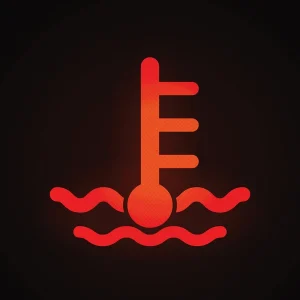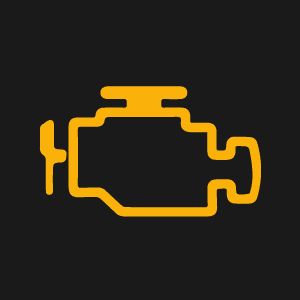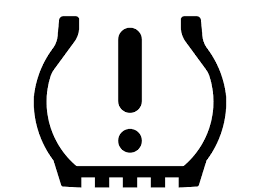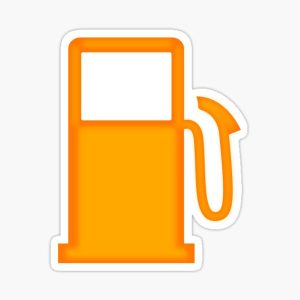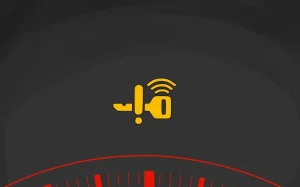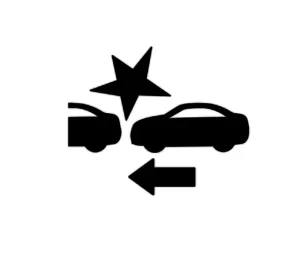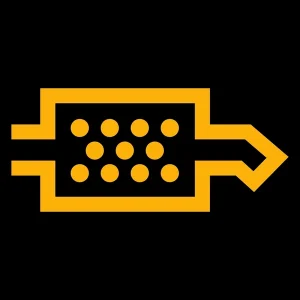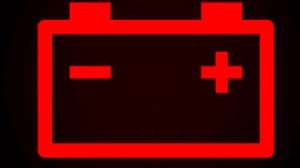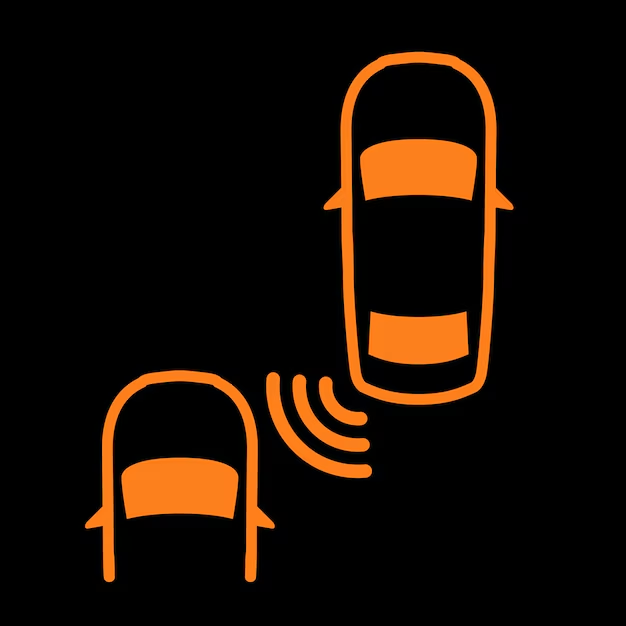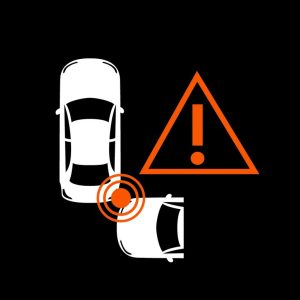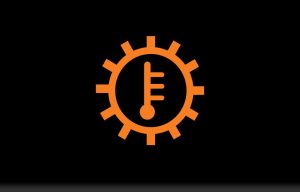You’re greeted by a dashboard that’s designed to keep you informed and safe on the road. But what happens when those dashboard warning lights start flashing? You know, the ones that can make your heart skip a beat – airbag, brake, power steering, and engine alerts, to name a few.
It’s natural to feel a sense of unease when you see them, but do you know what they really mean? Understanding these warning lights is vital to ensuring your safety and the performance of your vehicle.
So, what’s behind those flashing lights, and how can you take control?
Quick Navigation
Safety and Warning Systems
When you start your Hyundai i30, the airbag warning light illuminates for 6 seconds as a self-test, then goes off.
Airbag Warning Light
However, if it remains on, it indicates an airbag fault or seatbelt malfunction. Check cables under the passenger seat for loose connections and verify they’re firmly connected to resolve the issue.
If the light persists, it may indicate a fault with the airbag or seat belt pretensioner system. Always check the airbag warning light in conjunction with other warning lights for a comprehensive diagnosis.
Remember to investigate the issue promptly to guarantee your safety on the road.
Braking and Steering Issues
As you monitor your Hyundai i30’s dashboard, the brake warning light grabs your attention, illuminating for 3 seconds before going off.
Brake Warning Light
This could indicate low brake fluid levels or a fault with the Electronic Brake Force Distribution (EBD) system. Check the brake fluid level in the brake fluid reservoir, ensuring it falls between the MIN and MAX marks.
Power Steering Warning Light
Add brake fluid conforming to DOT 3 or DOT 4 specification, avoiding overfilling. If the light remains on, it may indicate Brake Pad Wear or a leak in the system.
The Power Steering warning light may also illuminate, indicating a fault with the electric power steering system or Steering Column Fault. Without power assisted steering, turning the wheel will become harder, most noticeably at slower speeds.
Engine and Performance Alerts
Your Hyundai i30’s dashboard is flashing a warning light, and it’s not just a minor issue.
Coolant Temperature Warning Light
Engine and performance alerts require immediate attention to prevent damage or even engine failure. If the Coolant Temperature warning light illuminates, pull over and turn off the engine as soon as possible.
MIL Warning Light
Check the coolant level and top it off once the engine has cooled. The MIL warning light indicates a fault in the emission control system, which may cause the engine to enter reduced power mode.
For accurate engine fault diagnosis, consult your owner’s manual or visit a Hyundai dealership. Don’t ignore these warnings, as they can lead to costly repairs or even accidents.
Tyre Pressure and Fuel Levels
Properly inflated tyres and adequate fuel levels are essential for your Hyundai i30’s overall performance, fuel efficiency, and safety.
Low Tyre Pressure Warning
You should regularly check your tyre pressure, as underinflated tyres can lead to uneven tyre wear, reduced fuel efficiency, and increased risk of a blowout. Perform tyre wear checks to guarantee even tread wear and make adjustments as needed.
Low Fuel Warning Light
For peak fuel efficiency, maintain a consistent driving speed, avoid heavy loads, and guarantee your tyres are properly inflated. Additionally, fuel up when the low fuel warning light illuminates to prevent engine misfire and catalytic converter damage.
Following these simple tips will help you get the most out of your Hyundai i30 while staying safe on the road.
Oil and Fluid Maintenance
Regular checks of your Hyundai i30’s oil and fluid levels are crucial to guarantee the longevity and health of your vehicle’s engine, transmission, and other critical systems.
Oil Pressure Warning Light
You should regularly check the oil level using the dipstick, adding oil in increments to avoid overfilling. The oil warning light will go out if the oil level is within the recommended range.
Additionally, check for oil leaks around the engine and transmission, as frequent additions of fluid may indicate a leak.
Perform fluid checks on other critical systems, such as the brake fluid, coolant, and transmission fluid, to confirm they’re at the recommended levels. This will help prevent damage and expensive repairs down the road.
Electrical and Accessory Issues
When the preheat glow plugs warning light illuminates, it indicates the engine is being preheated, and the light will go out once the engine can be started.
Glow Plug Warning Light
However, if the light stays on or flashes after the engine has warmed up or while driving, it may indicate a malfunction. You should check for glow plug issues, as this can affect your engine’s performance.
Smart Key Warning Light
Additionally, if you’re experiencing smart key problems, such as issues with the ISG system or difficulty starting the engine, it may be due to a dead smart key battery. Make sure to replace the battery regularly to guarantee proper function. Failure to do so can result in issues with the smart key system.
Advanced Safety Features Malfunctions
Malfunctions in advanced safety features like Autonomous Emergency Braking (AEB) and Lane Keeping Assist System (LKAS) can be particularly concerning, as they’re designed to protect you from potential hazards on the road.
AEB Warning Light
If your Hyundai i30’s AEB system malfunctions, you’ll be alerted by a warning light on your dashboard. This could be due to a fault in the radar or camera sensors, which can be resolved by cleaning them.
Airbag Sensor Warning
Airbag sensors may also be affected, triggering a warning light. Fault detection is vital to guarantee your safety on the road, so it’s essential to address any malfunctions promptly.
Consult your owner’s manual or visit a Hyundai dealership for assistance.
Lane Departure and Lane Keep Assist
Your Hyundai i30’s Lane Departure Warning System (LDWS) and Lane Keeping Assist System (LKAS) work in tandem to guarantee you stay safely within your lane and confirm you remain on course.
LDWS Warning Light
These advanced safety features are designed to prevent lane drift and certify lane centre guidance. LDWS warns you if you unintentionally drift out of your lane, while LKAS helps correct your steering to keep you centred.
LKAS Warning Light
Using a camera sensor on the front windscreen, these systems monitor lane lines on the road and alert you if you stray. By combining lane drift prevention with lane centre guidance, your Hyundai i30 helps you stay safe on the road.
Autonomous Emergency Braking
Activate the Autonomous Emergency Braking (AEB) system, and your Hyundai i30 takes a proactive step in preventing accidents.
AEB System Warning
This advanced feature uses radar and camera recognition to monitor road traffic and pedestrians ahead, warning you of an imminent collision and potentially applying emergency braking if necessary.
AEB Sensor Warning
Verify your AEB system is functioning correctly by cleaning the radar and camera sensors, located on the front grill and centre-top of the front windscreen, respectively.
Regular AEB sensor calibration and AEB system updates are vital to maintain the system’s accuracy and effectiveness.
If the AEB warning light illuminates, check for any malfunctions or issues that need attention.
Cooling and Temperature Alerts
The coolant temperature warning light on your Hyundai i30’s dashboard plays a crucial role in alerting you to potential engine damage.
Coolant Temperature Warning
If it illuminates, accompanied by an audible alert, it means the coolant temperature has exceeded 125±2.5°C (257±4.5°F). Pull over as soon as possible and secure the vehicle to prevent further damage.
Overheating Warning
Check the cooling fan’s operation and the water pump drive belt’s presence and tightness. Inspect the radiator for leaks and the hoses for damage.
Once the engine has cooled, top up the coolant level and monitor the warning light for re-illumination. Regular coolant level checks can help prevent engine overheating, which can lead to costly repairs or even engine failure.
Additional Critical Alerts
Seat Belt Reminder Light
Persistent flashing with audible alerts signals unbuckled seat belts. This crucial safety feature ensures proper restraint system engagement before driving. Check all passenger seat belts are securely fastened.
Electronic Stability Control (ESC) Warning
Illuminates when traction control systems are disabled or malfunctioning. Reduced vehicle stability requires immediate attention for safe cornering and braking. Avoid sharp turns until system is checked.
Hill Start Assist Warning
Indicates system malfunction affecting the vehicle’s ability to prevent rollback on inclines. Manual brake application will be required when starting on hills until system is repaired.
Brake Pad Wear Indicator
Shows when brake pads have reached minimum thickness. Schedule immediate replacement to maintain optimal braking performance and prevent rotor damage.
Diesel Particulate Filter (DPF) Warning
For diesel models, signals full particulate filter requiring regeneration. Extended city driving may trigger this – highway driving at sustained speeds can help burn off accumulation.
Reduced Power Mode Warning
Indicates engine has entered limp mode to prevent damage. Performance will be limited – have vehicle diagnosed immediately to address underlying mechanical or electronic issues.
12V Battery Charge Warning
Signals auxiliary battery charging system fault. May prevent engine start if left unaddressed – have alternator and battery checked to avoid being stranded.
Key Fob Battery Warning
Flashing light indicates low smart key battery. Replace CR2032 battery promptly to maintain keyless entry and push-button start functionality.
Blind Spot Monitoring (BSM) Warning
Alerts to system malfunction that detects vehicles in adjacent lanes. System may deactivate in heavy rain – clean rear radar sensors for optimal performance.
Rear Cross Traffic Alert Warning
Shows system fault when reversing. The blind spot monitoring while backing up may not function – check surroundings carefully until repaired.
Run-Flat Tyre Indicator
Specific to models with run-flat tyres, shows when a puncture has been detected. While limited mobility is possible, immediate tyre inspection/replacement is recommended.
Fuel Cap Warning Light
Indicates improperly sealed fuel cap. Tighten until clicks to maintain proper fuel system pressure and prevent evaporative emissions issues.
Transmission Overheat Warning
Signals automatic transmission fluid temperature is too high. Stop safely and allow to cool to prevent internal damage to transmission components.
Battery Temperature Warning
For hybrid/electric models, indicates battery cooling system issues. Continued driving may trigger reduced power mode – have system checked to prevent battery damage.
When looking at Hyundai, make sure to check out our guides on models like the Hyundai IONIQ, Hyundai Kona, Hyundai I10, and Hyundai I20. Understanding dashboard warning lights is essential. Our expert reviews break down what each light means, highlighting common alerts for these models and what they could signal about underlying issues, so you’re never left guessing behind the wheel.
Always consult your owner’s manual when warning lights appear and seek professional diagnosis for persistent warnings to maintain your Hyundai I30’s performance, safety and longevity. The vehicle’s advanced diagnostic systems provide detailed fault codes that help technicians quickly identify and resolve issues.




